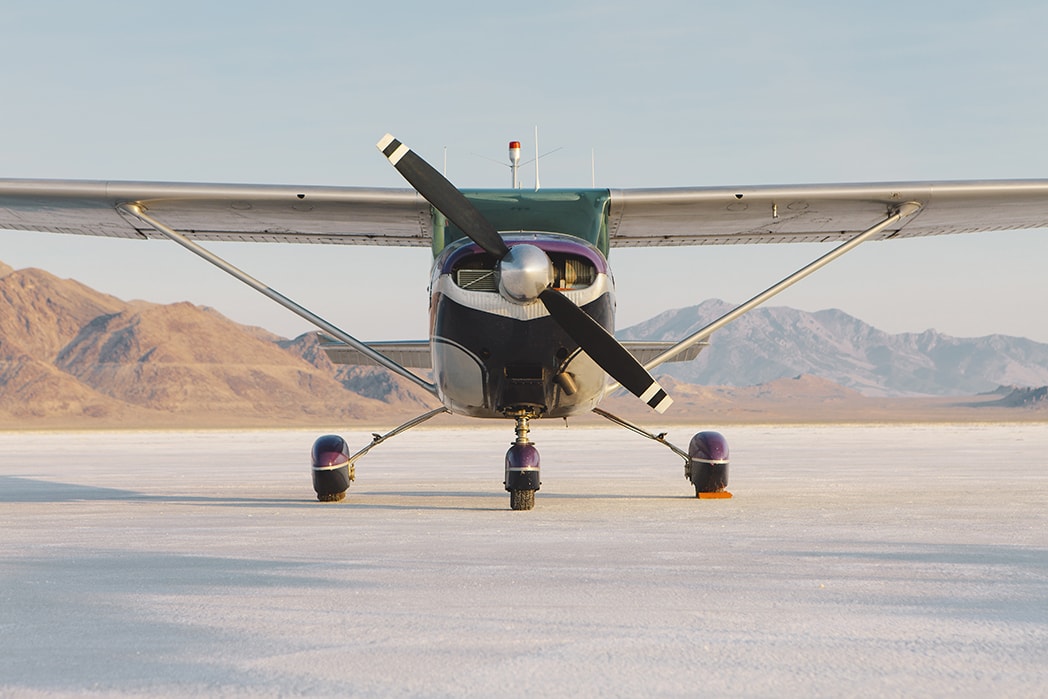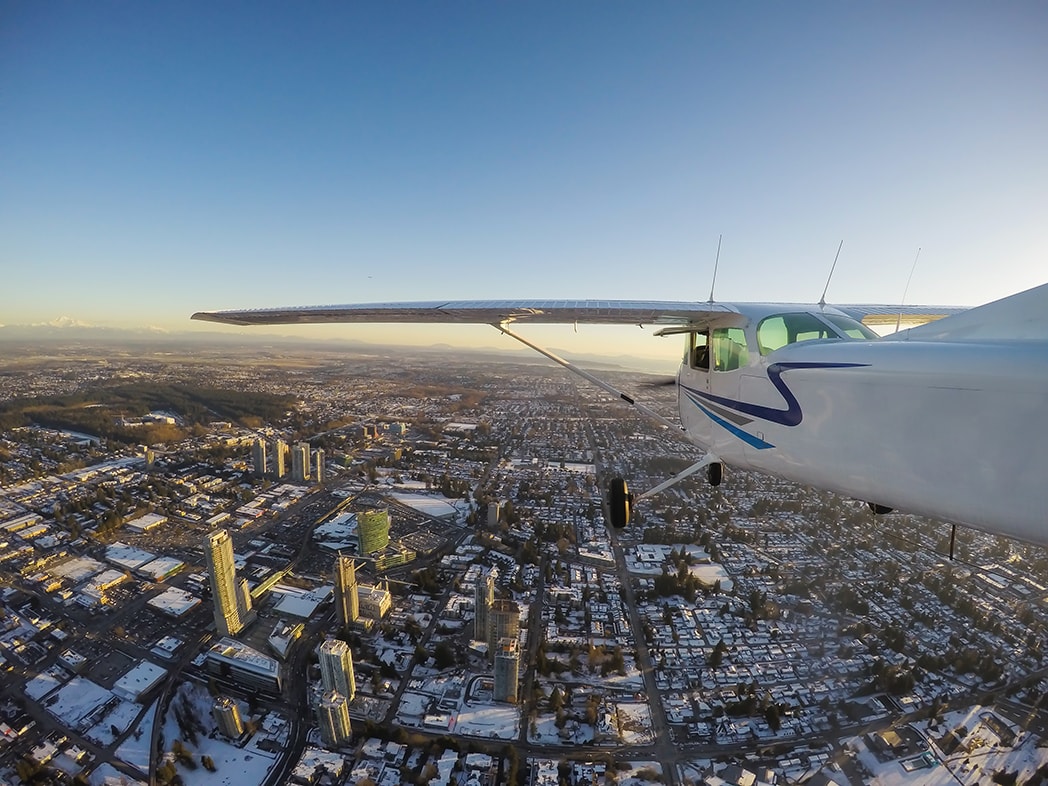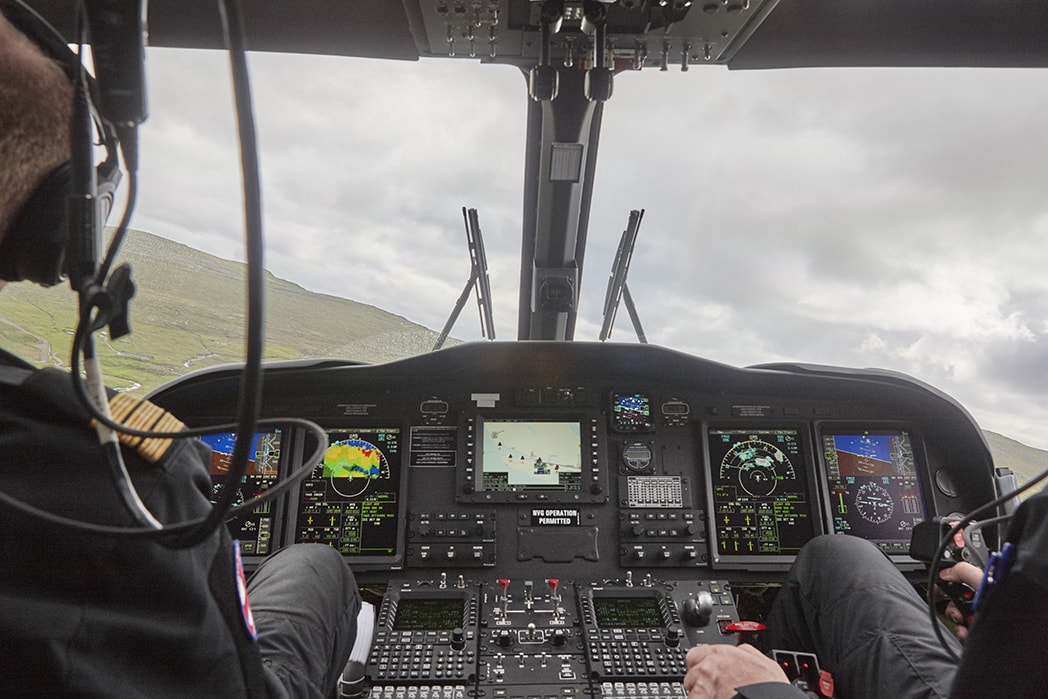Best Techniques for a Short Field Landing Cessna 172
Apr 21, 2025
Short field landing in a Cessna 172 requires precise techniques, especially when considering a short field landing Cessna 172. This article covers the essential steps: approach setup, speed control, flap use, and overcoming common challenges to ensure a safe landing on restricted runways.
Setting Up for a Short Field Landing
To execute a successful short field landing in your Cessna 172, you need to be extremely well-versed in the aircraft's performance capabilities-and that means lots of practice.
You'll need to master the right flap settings and airspeed control to maintain stability during that all-important approach. You may even need to adjust the traffic pattern to get the most out of your approach steadiness.
That descent should start with a controlled reduction in power and a fine-tuning of the pitch. You want to ease into it, not rush in.
Establishing Approach Speed
Your target approach speed for a short field landing in a Cessna 172 is 61 knots, and that's with full flaps. Wind conditions will affect that speed, though. A headwind can cut your landing roll by 10% for every 9 knots-it's the opposite with a tailwind. That's 10% longer roll for every 2 knots.
Getting that approach speed just right allows you to touch down precisely on the runway. Practicing slow flight will help you manage speeds close to stall-and that's crucial for a stable final approach.
Configuring Flaps and Power
Using full flaps for a landing in a short field gives you the distance you need to land safely-and control throughout the descent. Maximum flaps slow down that approach speed, increase drag and help you avoid obstacles. That gives you a steady, controlled descent.
Getting those flaps set up correctly is critical to executing a secure and accurate field landing. Make sure you check your flap settings before you start your approach.
Identifying Aiming and Touchdown Points
For a successful short field landing, it is essential to accurately identify both the aiming and touchdown points. The aircraft’s nose should be directed towards the aiming point on approach, with the goal of having the aircraft touch down either precisely at or within 200 feet of the designated touchdown point.
To secure precise placement upon touching down, modulating your glide path for a stable descent is key. Sometimes this may necessitate adopting a steeper approach angle to surmount any obstacles in proximity to the runway while still ensuring sufficient space for landing.
Final Approach Techniques
A stable approach is key to a short field landing. During the final approach control your airspeed and descent rate and you’ll be able to touch down at or near stall speed. Proper techniques and adjustments will help you overcome challenges like misjudging distance and alignment.
Managing Airspeed and Descent Rate
Airspeed management is a common mistake during the final approach for a short field landing, often due to too much speed. This will cause you to miss the touchdown point and land too far down the runway. Use power to manage the glide path and pitch to maintain the desired airspeed.
Flying with full flaps at 1.3 times stall speed will stabilize the approach. Reducing RPM is also key to controlling the descent rate.
Executing the Landing
Executing the landing where the real skill comes in is what you focus on after a successful approach. That means flying slower during short field landings. You want the shortest possible ground roll, and flying slower at those speeds helps you achieve that. Control sensitivity decreases at slower speeds, making the controls feel mushy and requiring more deflection.
If your approach starts to get a little hairy, execute a go-around and reassess the situation. That's a lot easier than trying to recover once you're committed to landing.
Flare and Touchdown
When you touch down, you want to be at minimum controllable airspeed at just above stall speed. That's where you use power to control altitude and pitch to control airspeed. Increase your pitch in the flare to arrest that descent rate. Touching down at stall speed gives you the lowest possible ground speed and the shortest ground roll.
After you touch down, bring the aircraft to a stop and lower that nosewheel smoothly. Reduce your throttle to idle as you approach the runway, and adjust based on the aircraft's weight.
Applying Aerodynamic Braking
Right after touchdown, you want to increase aerodynamic braking by pulling back on the elevator. That technique along with the right amount of practice can greatly shorten that ground roll after landing.
That technique applied right leads to a reduction in landing distance. And that makes for a more secure, more concise stopping process.
Effective Brake Usage
The moment the aircraft touches down, start slowing it down with the brakes. As you roll out, you'll want to gradually increase the pressure. When the wheels make contact with the ground, slide your feet up and ease into the brakes. That way you avoid locking them up.
Proper braking technique is what gets you a successful landing. And that's exactly what examiners are looking for: immediate yet assertive brake application. Once you're on the runway, ease into your braking to bring the aircraft to a safe, stable halt.
Common Challenges and Solutions
Short field landings require a specific approach to stop safely and quickly. One of the most common errors pilots make is coming in too fast or too high, which puts them over the intended touchdown point. Regular practice and thorough briefings before landing can help you avoid that.
When you're performing a short field landing, you need to use your brakes just right. Not too little, not too much. Too little and you risk running off the end of the runway. Too much and you risk flat spots on the tires and skidding issues. Finding that sweet spot takes practice, but it's what gets you and your aircraft home safely.
Handling Too Much Airspeed
Too much airspeed on approach and you’ll balloon, float and over shoot the touchdown point using more runway and increasing the risk of excursion. Fix it early or go around if you can’t stabilize the approach.
If you slow down too much during the flare you’ll sink and you’ll get a hard landing, land short or stall at low altitude. Go around if you’re below 5 knots of your threshold speed.
Dealing with High Descent Rates
During a steeper approach you need to be aware of a high descent rate and the difficulty of timing the flare. A high descent rate means forceful landings so you need to keep your approach consistent.
To counter a high descent rate during the flare apply power gently and make sure some power is maintained. Approach obstacles with care as they will make the flare more complicated.
Managing Crosswind Conditions
When cross winding, keep the wing level and use the rudder to keep the aircraft straight for a straight in landing. This keeps the aircraft aligned with the runway and minimizes drifting.
To master crosswind landings, practice and attention to detail are key. Practice frequently under these conditions and you’ll build confidence and proficiency in handling these situations.
Performance Factors and Environmental Considerations
Know your performance factors, weight and air density. Know your local runway and obstacles before you land. Too fast an approach and you’ll need more runway to stop.
Performance is worse at high altitude than sea level due to engine inefficiency and lift. Weather factors like wind, temperature and runway surface affect short field landing performance.
Weight and Balance
Greater weight increases inertia and landing roll distance. Landing distances for specific gross weights can be found in the Pilot Operating Handbook (POH). Smaller aircraft do not have shorter field landing distances at lower weights; this is only true at maximum gross weight.
Always consult the POH for specific landing distances based on weight and balance to ensure a safe and controlled landing.
Weather Conditions
Atmospheric conditions such as wind, temperature, and density altitude can greatly influence the effectiveness of landings. Landings become more complex with a tailwind present, demanding heightened vigilance and expertise.
The orientation and velocity of the wind are critical elements that affect short field landings. When temperatures go up, so does density altitude, which in turn affects how an aircraft performs during landing.
Additionally, weather conditions can also impact the overall range of the aircraft. For instance, when considering how many miles a Cessna 172 can fly, wind conditions, temperature, and fuel efficiency all play a role.
The performance of both engine power and aerodynamic lift is adversely affected by high density altitude when executing a go-around maneuver after an attempted landing.
If you increase your approach speed for a short field landing by 10%, it results in approximately 20% longer distance needed to come to a stop upon touching down illustrating the important relationship between speed at approach and stopping distance required on short fields.
Runway Surface and Length
The type of runway surface affects braking and landing distance. Landing on wet grass reduces braking and landing distance, while paved runways give the best braking. Landing on dry grass adds 45% to landing distance. A downhill slope adds 10% to landing distance for every 1% slope.
Runway grade affects landing distance, uphill landings are better. Consider this when planning your approach and landing to get the shortest ground roll.
Training and Practice
Practice is key to developing the skills for short field landings. By practicing regularly you develop muscle memory, improve your judgment and build confidence. Rehearsing different landing scenarios also helps you to adapt and make decisions.
To get better at short field landings pilots benefit from simulator training, advanced workshops and guidance from experienced instructors. Staying calm and composed under pressure is key to a good landing.
Simulator Training
Pilots can practice short field landings in the safety of a simulator, a risk free environment to practice. During training instructors can give instant feedback and corrections on techniques and strategies.
By practicing simulated scenarios that mimic real world conditions pilots gain experience in handling the different situations and challenges of short field landings they will face during live flights.
Flight Instructor Guidance
Flight instructors give personalized feedback on each pilot’s actions to help them improve their short field landing skills. A flight instructor is key to helping students master the techniques for short field landings.
Getting feedback from a qualified flight instructor is crucial to finding and fixing mistakes as pilots practice landings. This ensures pilots get the skills they need to be good at short field landings.
Real-World Practice Scenarios
Training and practice are essential for mastering short field landings and building pilot confidence. Using flight simulators allows pilots to practice short field landing techniques in a controlled environment without the risks associated with actual flight.
Flight instructors provide valuable hands-on training, offering immediate feedback to help pilots correct mistakes and improve their short field landing skills.
Real-world practice scenarios help pilots develop the confidence and proficiency needed for successful landings.
At Flight Nerd Air Force, we’re your go-to source for mastering aviation. Whether you're exploring the Cessna 172's performance, comparing it to aircraft like the Piper Archer, or learning about fuel efficiency, our expert community is here to guide you. Join us for in-depth insights, training resources, and tips from pilots with over 20 years of experience. Start your flight journey today with Flight Nerd Air Force!




